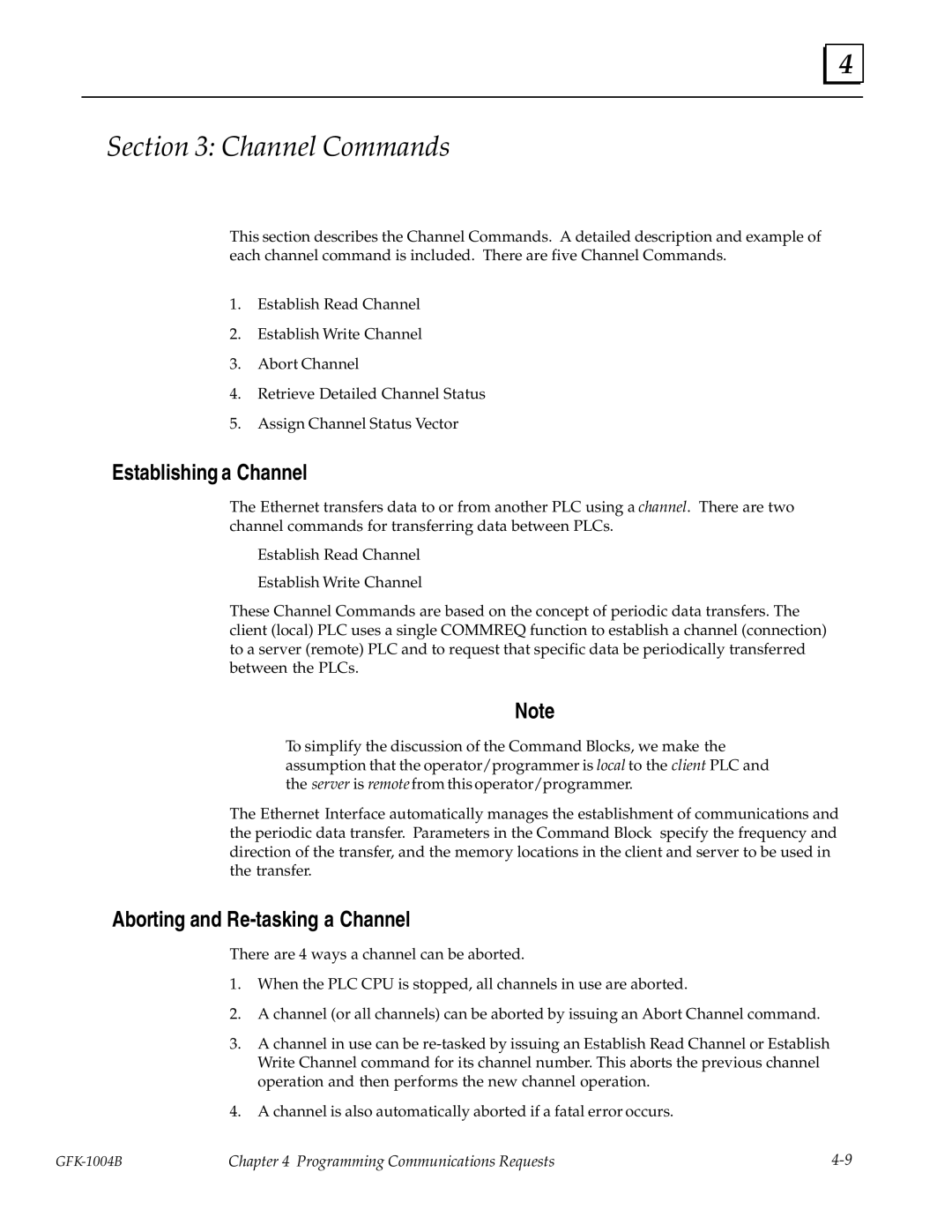4 |
Section 3: Channel Commands
This section describes the Channel Commands. A detailed description and example of each channel command is included. There are five Channel Commands.
1.Establish Read Channel
2.Establish Write Channel
3.Abort Channel
4.Retrieve Detailed Channel Status
5.Assign Channel Status Vector
Establishing a Channel
The Ethernet transfers data to or from another PLC using a channel. There are two channel commands for transferring data between PLCs.
HEstablish Read Channel
HEstablish Write Channel
These Channel Commands are based on the concept of periodic data transfers. The client (local) PLC uses a single COMMREQ function to establish a channel (connection) to a server (remote) PLC and to request that specific data be periodically transferred between the PLCs.
Note
To simplify the discussion of the Command Blocks, we make the assumption that the operator/programmer is local to the client PLC and the server is remote from this operator/programmer.
The Ethernet Interface automatically manages the establishment of communications and the periodic data transfer. Parameters in the Command Block specify the frequency and direction of the transfer, and the memory locations in the client and server to be used in the transfer.
Aborting and Re-tasking a Channel
There are 4 ways a channel can be aborted.
1.When the PLC CPU is stopped, all channels in use are aborted.
2.A channel (or all channels) can be aborted by issuing an Abort Channel command.
3.A channel in use can be
4.A channel is also automatically aborted if a fatal error occurs.
Chapter 4 Programming Communications Requests |
